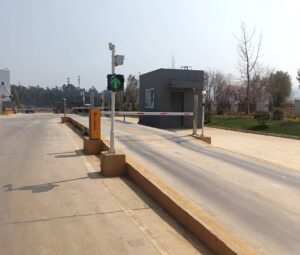Weighbridge

Commonly used in

Industrial & Manufacturing

Consumer Packaged Goods

Food & Beverage
Unmanned Weighbridge System
Find the solution that best fits your application
Accurate Weight Measurement
Time and Cost Savings
Efficient Data Management
Gallery


Unmanned Weighbridge Features
Automated Weighing
The system is capable of automatically weighing vehicles as they pass over the weighbridge, without the need for manual intervention. This feature increases efficiency and reduces human error.
Real-Time Weight Monitoring
The system provides real-time weight monitoring, allowing immediate access to weight data as vehicles pass over the weighbridge. This enables prompt decision-making and enforcement of weight restrictions.
Vehicle Identification
Unmanned weighbridge systems often incorporate vehicle identification technology, such as RFID (Radio Frequency Identification) tags or license plate recognition, to associate the weight data with specific vehicles. This feature helps in tracking and managing vehicle movements and maintaining accurate records.
Automated Data Capture
The system captures and records weight data automatically, along with relevant information such as date, time, and vehicle identification. This eliminates the need for manual data entry and ensures accurate and consistent record-keeping.
Remote Monitoring and Control
Unmanned weighbridge systems can be remotely monitored and controlled from a centralized location. This allows operators to oversee multiple weighbridges and manage operations efficiently.
Alarms and Notifications
The system can be programmed to generate alarms or notifications when certain conditions are met, such as weight limit violations or equipment malfunctions. This feature alerts operators or relevant personnel to take appropriate action promptly.
Integration with Other Systems
Unmanned weighbridge systems often offer integration capabilities with other software systems such as fleet management, logistics, or regulatory databases. This enables seamless data exchange, reporting, and streamlines overall operations.
Analytics and Reporting
The system may include analytical tools to process and analyze the collected weight data. This allows for generating comprehensive reports, identifying trends, and making informed decisions based on the data insights.
Compliance Enforcement
Unmanned weighbridge systems can be programmed to enforce weight regulations automatically. If a vehicle exceeds weight limits, the system can trigger alerts, generate violation reports, or initiate actions such as issuing fines or denying access.
Scalability and Customization
The system can be scalable to accommodate different volumes and types of vehicles. Additionally, it can be customized to meet specific operational requirements and integrate with existing infrastructure.
